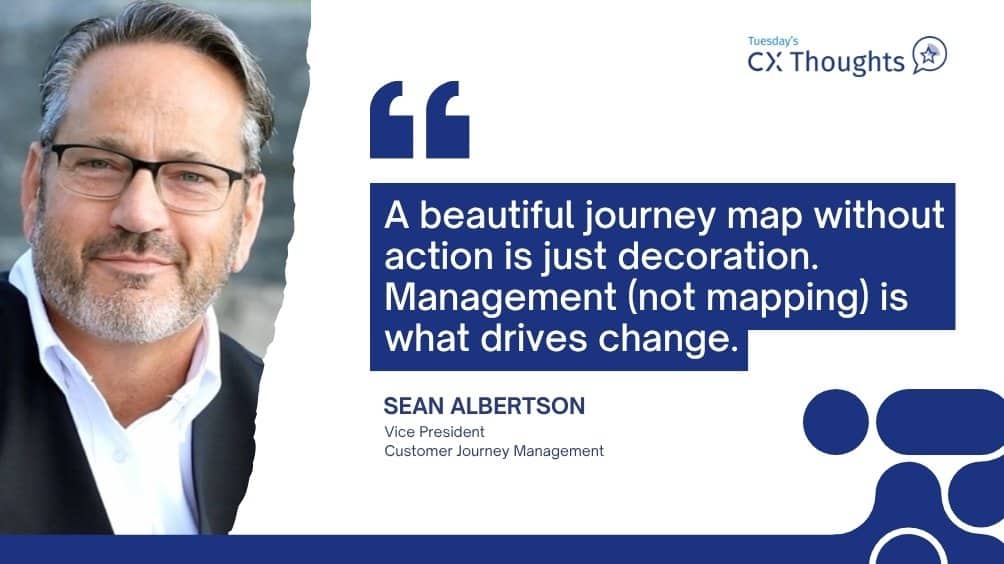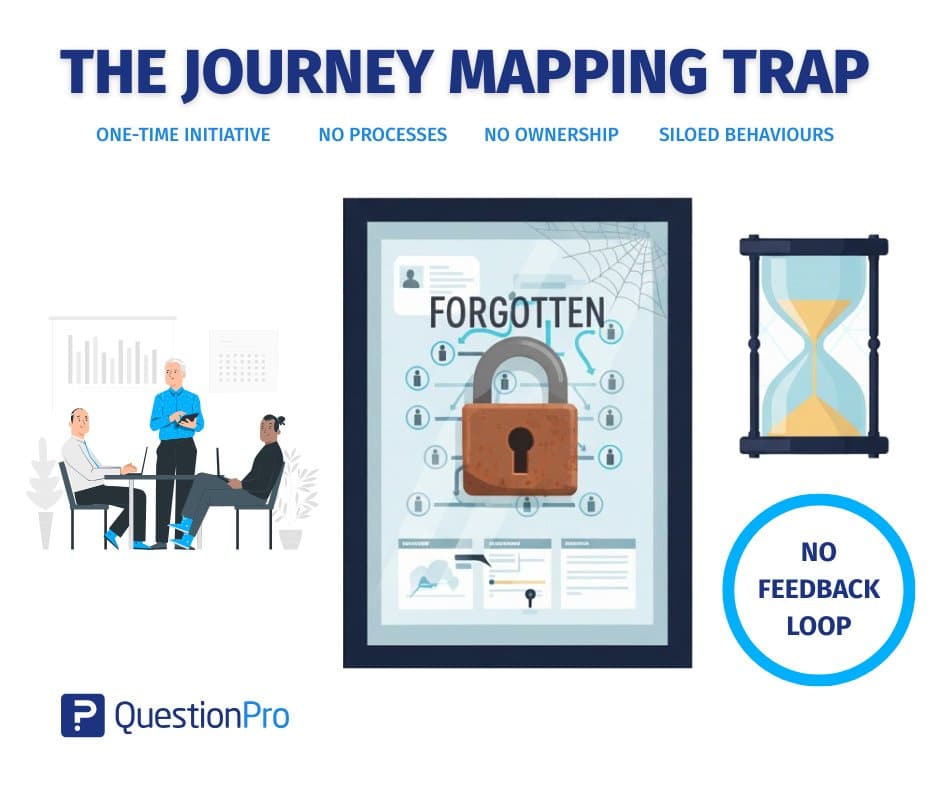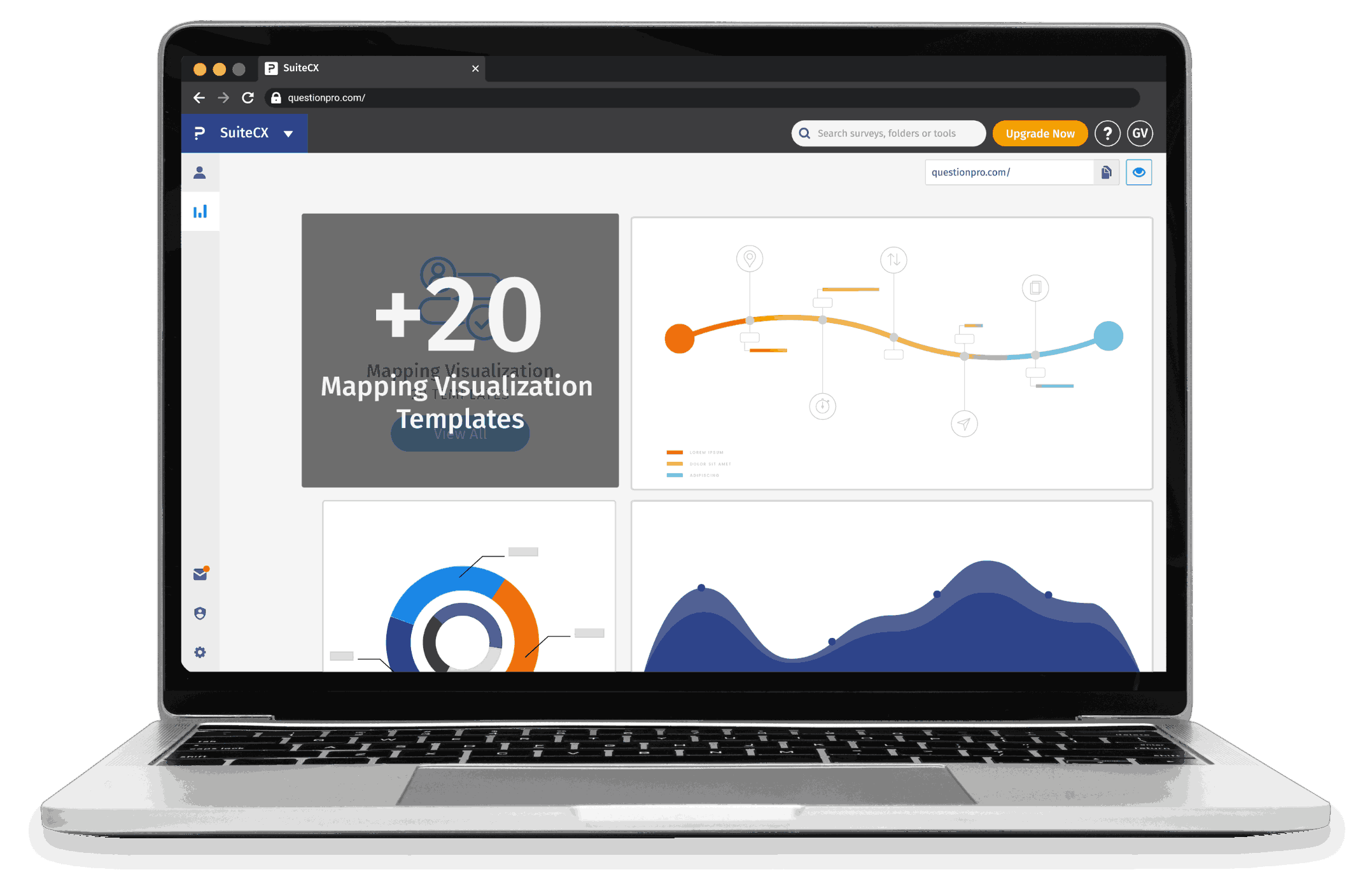
A beautiful journey map without action is just decoration. Management (not mapping) is what drives change.
Sean Albertson
Inaction Is the Problem
Customer journey mapping has become a must-have tool in every CX leader’s playbook. It’s often the first step in any customer experience transformation, and for good reason. Journey maps are powerful tools for understanding what customers go through, uncovering friction, and sparking organizational empathy. They make the invisible visible, highlighting where customer expectations meet internal processes, and where things start to break down.
But here’s the truth: most journey maps end up sitting on a virtual shelf. They may look impressive with color-coded stages, touchpoints, emotional arcs, and fancy swim lanes, but they rarely lead to sustained change. Why? Because mapping, on its own, doesn’t fix the journey. Action does.
The Journey Mapping Trap
In many organizations, mapping is approached as a one-time initiative, often driven by a project team or an outside agency. There’s typically a burst of energy around the creation of the map, and maybe even a few post-it-laden workshops to gather internal insights or customer anecdotes. Yet once the final journey map is produced, it gets shared, perhaps even framed, and then quickly forgotten. No processes are built around it. No one is assigned responsibility for the touchpoints it represents. And most critically, no system is put in place to keep it alive.
The limitations of traditional journey mapping become clear when you look at what happens after the map is made. Many teams treat the map as the end product, rather than the beginning of a new way of working. Feedback loops are absent, meaning that new customer pain points go unnoticed. Data, both qualitative and quantitative, remains disconnected from the journey. And over time, the organization quietly slips back into siloed behaviors, relying on internal assumptions rather than actual customer insights.

This is the journey mapping trap:
- Maps are completed but lack ownership
- There’s no system to track progress or update the journey
- Feedback and customer data aren’t integrated
- Teams revert to siloed priorities and old processes
The result is a well-intentioned exercise that doesn’t produce meaningful change.
Why Journey Management Is the Missing Link
Customer Journey Management is that system. CJM is a discipline that bridges the gap between insight and execution. It transforms the journey map from a snapshot into a living, breathing system that evolves as your business and your customers do. It gives teams the ability to monitor the journey over time, identify new issues, track progress on fixes, and continuously align the organization around the customer.
This shift requires more than technology, it demands a mindset change. With CJM, teams begin to treat the journey as an operational framework, not just a storytelling tool. They begin to assign ownership to each stage and touchpoint, making it clear who is accountable for delivering on the experience. Voice of Customer (VoC) and operational data are integrated directly into the map, so that decisions are driven by real-time feedback rather than assumptions. As friction is identified, whether through complaints, survey data, or employee insight, it’s tagged, tracked, and addressed.
Platforms like QuestionPro’s CJM system enable this kind of work by providing a centralized place to map, monitor, and manage the journey. But the platform is just the enabler. What really changes the game is the approach: treating the journey as a dynamic asset that requires continuous attention and cross-functional collaboration.

Where to Begin
For organizations just starting out, this may sound daunting. But the good news is, you don’t have to start with a full CJM implementation to make progress. Often, the best place to begin is with a focused workshop. These workshops can take an existing journey map or help build a new one. Then you can use it to identify immediate friction points, assign ownership, and develop a roadmap for improvement. Whether or not you use a platform like QuestionPro’s, this kind of facilitated engagement can help jumpstart the journey from mapping to management.
The key is momentum. If your journey maps haven’t led to the transformation you hoped for, it may be time to revisit your approach. Are the maps still accurate? Are they tied to real-time feedback? Do they have owners? Are they part of your operational rhythm, or are they collecting digital dust?
Let’s Turn Mapping Into Momentum
This is where I can help. With two decades of CX strategy experience and a structured methodology grounded in the 4ROCKS framework, I work with organizations to identify friction, facilitate alignment, and build systems for action. Whether you already have a journey map or are starting from scratch, we can build a path forward that actually drives results.
📅 Want to turn your maps into momentum? Book 30 minutes with me to explore journey management, plan a journey mapping workshop, or learn how the QuestionPro CJM platform can support your team.
Let’s clear the rocks in your journey, and make it flow.







